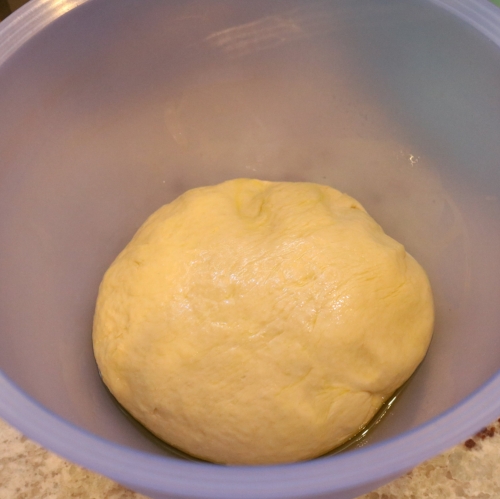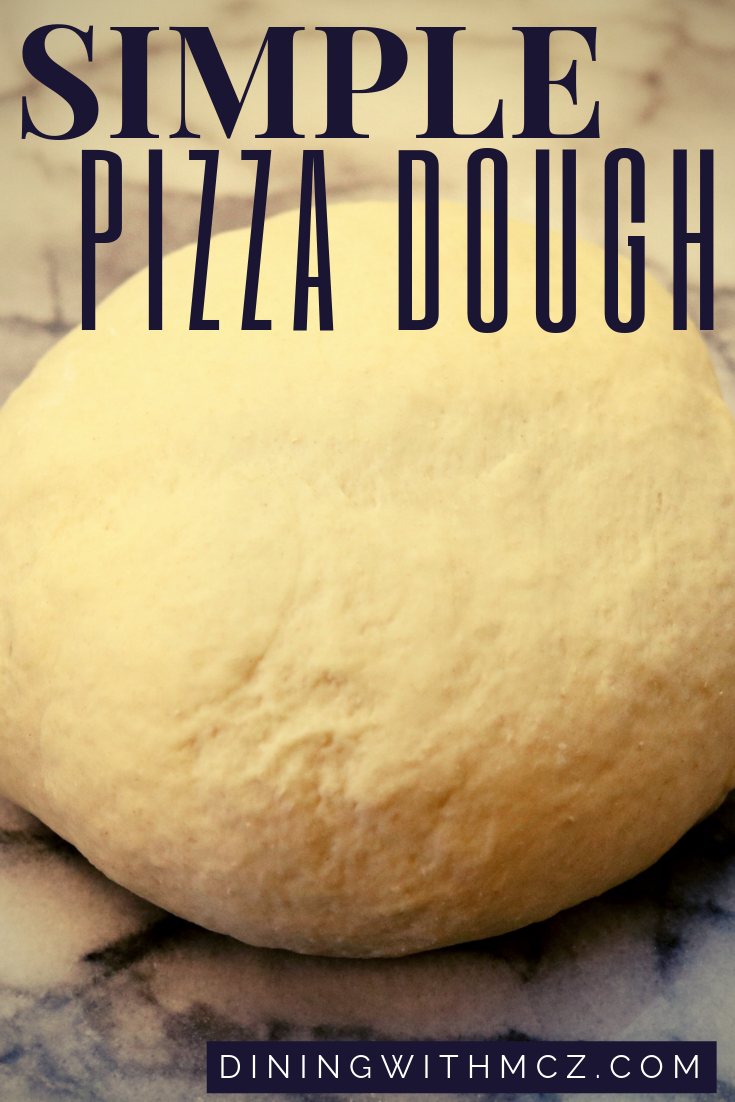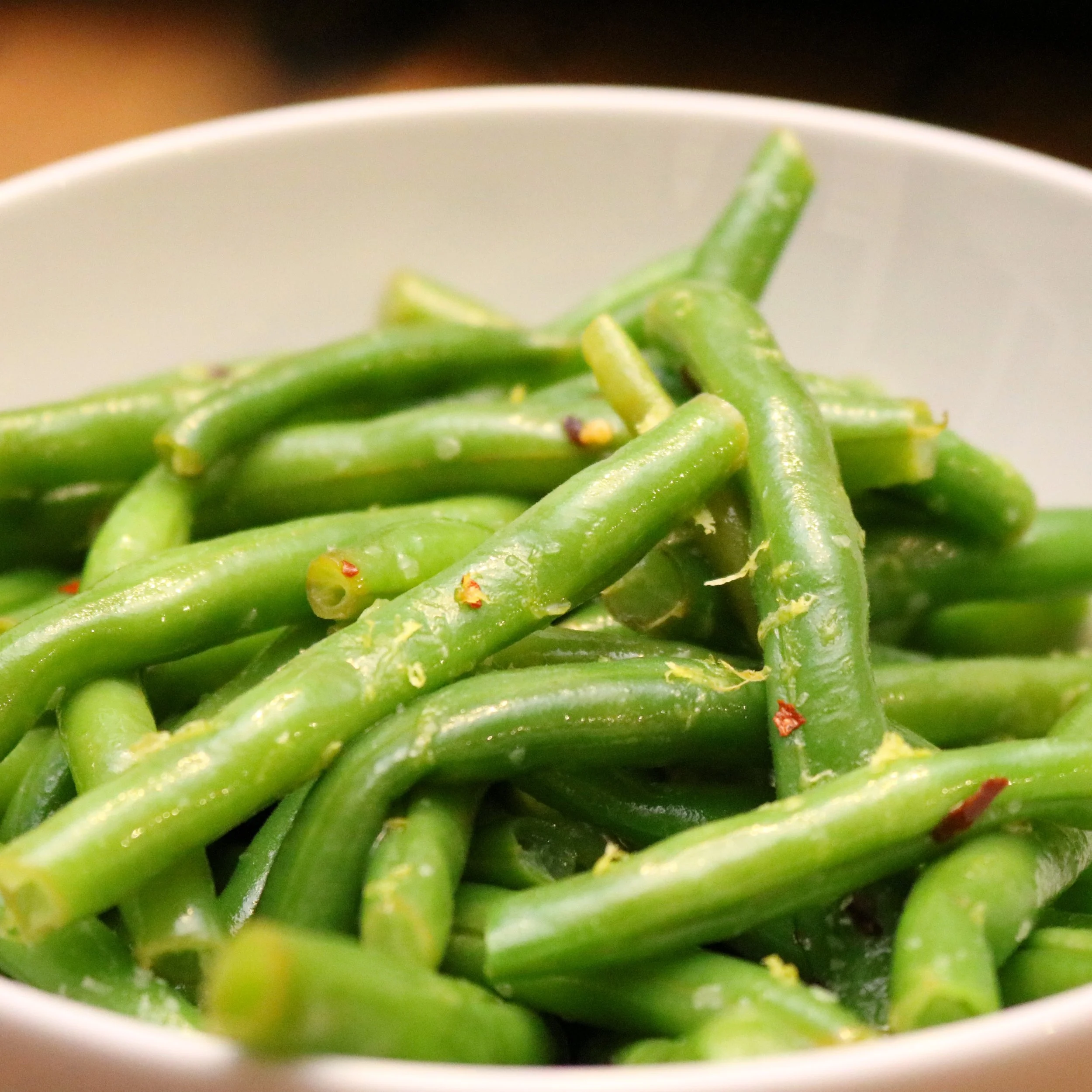Simple Pizza Dough

We make pizza dough a lot. Probably at least once a week. This recipe is adapted from Bobby Flay’s Pizza Dough Recipe. It’s reliable and easy, so long as you understand that the weather will have a big impact on your flour/water ratios! Put this recipe to work for grilled pizza, cast iron pizza, or Garlic Knots.
Yield: pizza dough sufficient for 2 large pizzas (or 1 pizza and 1 batch of Garlic Knots)
Ingredients
3 1/2 to 4 cups flour*
1 teaspoon sugar
2 teaspoons salt
1 1/2 cups warm water (around 110°F)**
2 tablespoons olive oil, plus a little extra
1 packet instant yeast (2 1/4 teaspoons)
Stand mixer with dough hook (recommended)
Instructions
Combine 3 1/2 cups flour, sugar, salt, and yeast in a mixing bowl fitted with a dough hook. Have another 1/2 cup of flour in a measuring cup nearby. Turn the mixer on to a low speed and slowly pour the water and olive oil in from the side. Slowly increase the speed of the hook to allow the dough to come together. It’ll look kind of like a mess. Give it time. After a minute or so, scrape down the sides of the bowl with a silicone spatula. Make sure to scrape all the way down to the bottom center of the bowl - flour sometimes likes to collect down there.
If the dough is sticking heavily to the sides of the bowl, begin to sprinkle in the extra flour, a little at a time. Scrape down the sides as needed. Continue mixing at a medium speed and adding enough flour so that the dough comes together in a large ball on the hook. It shouldn’t be sticking to the sides anymore and should just barely stick to the bottom of the bowl.
In the photo below (apologies for the not-so-great photo), you can see that the dough is starting to come together on the hook but still looks fairly sticky. Continue to sprinkle flour along the sides and allow it to mix into the dough.
When the hook is pretty much just spinning with a large ball of dough, it’s ready to remove. Sprinkle a little flour on a clean surface (such as a marble pastry board). Use your spatula to scrape the dough out of the bowl and onto the surface.
Sprinkle a little flour over the top of the ball of dough and a little onto your hands. Lightly knead the dough a few times by placing the heel of your first hand on the dough on the side closest to you and push the heel of your second hand into the opposite side of the dough and away from you. Fold the dough back over on itself and rotate 90°. Sprinkle with flour if the dough is too sticky and repeat until the surface of the dough looks smooth. Form the dough into a large ball.
Drizzle some olive oil (about 1 tablespoon) in a large bowl and place the ball of dough in the bowl, turning the dough a few times to coat with the oil.
Oiled pizza dough, before rising.
Cover the bowl with a clean kitchen towel and set somewhere warm (i.e. don’t set it in front of a drafty door or window). Let it rise for about 1 hour, or until it has doubled in size.
Pizza dough, after rising for 1 hour.
Remove the dough from the bowl and place on your clean, lightly floured surface. If you’re making two pizzas, split the dough in half and form two equal balls. Cover with a kitchen towel and allow the dough to rise for another 30 minutes (such as while you’re heating up the grill for Grilled Pizza). Lightly flour your surface again and roll out the dough into a large circle (about 12” to 14”). You’ll have the best result if you just roll it out once. The more you work with the dough at this stage, the more elastic it will become (meaning it will spring back to its smaller size, resulting in a thicker crust). Move the rolled out dough to a heavily floured pizza peel (or whatever you’re using to transfer the pizza for cooking), top with desired toppings, and cook.
Alternatively, if you’re making one pizza and one batch of garlic knots, split the dough in half and form one large ball and use the other half according to the the Garlic Knots recipe. Cover the large ball with the kitchen towel and allow it to continue rising for about 30 minutes. Split the other half into about 10 equal pieces, form into knots according to the recipe and allow them to rise for about 30 minutes before baking.
If you’re only making one pizza, you can stash the other half of the dough into a zip-top bag and place in the fridge. It’ll keep for a day or so. To use from the fridge, remove it from the fridge at least 30 minutes before you intend to use it to allow it to come up to temperature. The dough from the fridge will be a little more elastic than when freshly made, so it may be more difficult to roll out into a large, thin pizza crust. It works great for Garlic Knots though.
Notes
*Start with 3 1/2 cups of flour and have more handy to add into the dough as needed. If you’re in the midst of a humid summer day, don’t be surprised if you end up using closer to 4 1/2 cups of flour total. Likewise, on a cool, dry Fall or Winter day, you may only need about 3 1/2 cups of flour. Additionally, you can use either all-purpose flour or bread flour. You can get a chewier, thicker dough using all-purpose, and a thinner, crispier result with the bread flour.
**To easily approximate this without using a thermometer, heat 3/4 cup of water in an electric kettle to a boil. Add the hot water to at least a 2-cup measuring cup and add 3/4 cup of cold water (such as from a fridge water dispenser) to reach desired 1 1/2 cups warm water.










